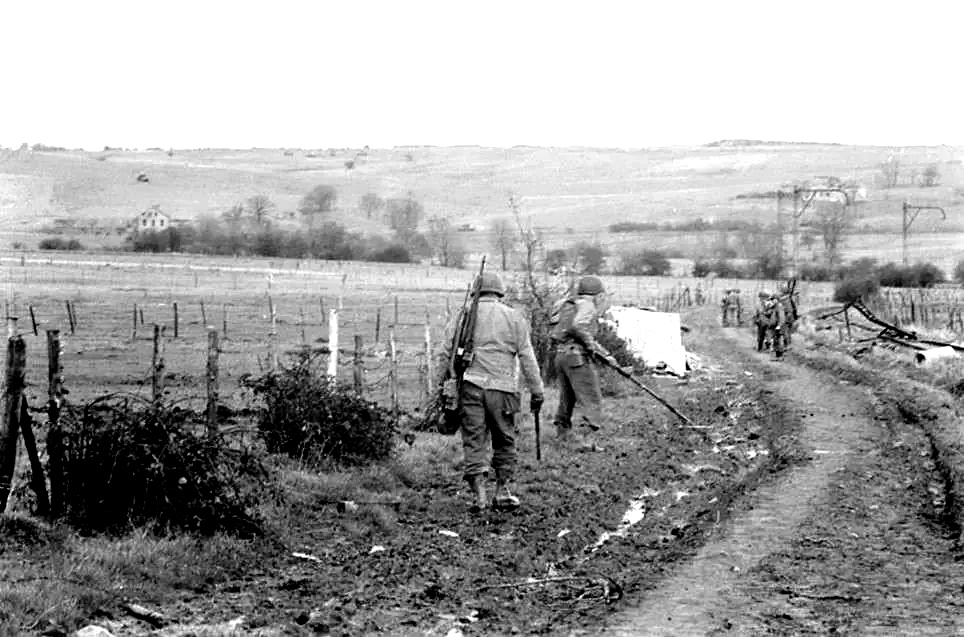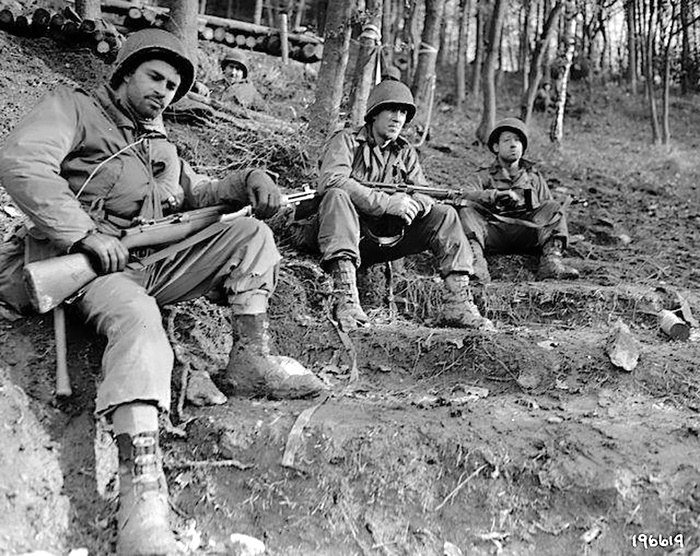Document Source: Staff Department, The Infantry School, Fort Benning (Georgia), Advanced Infantry Officers Course, 1945-1950. The Operations of the 26th Infantry Regiment, 1st Infantry Division, in the Attack on the Hürtgen Forest, Germany, November 16, 1944, to December 5, 1944, during the Rhineland Campaign. This archive relates the Personal Experience of a Regimental Assistant S-3, Maj Maurice A. Belisle.
.
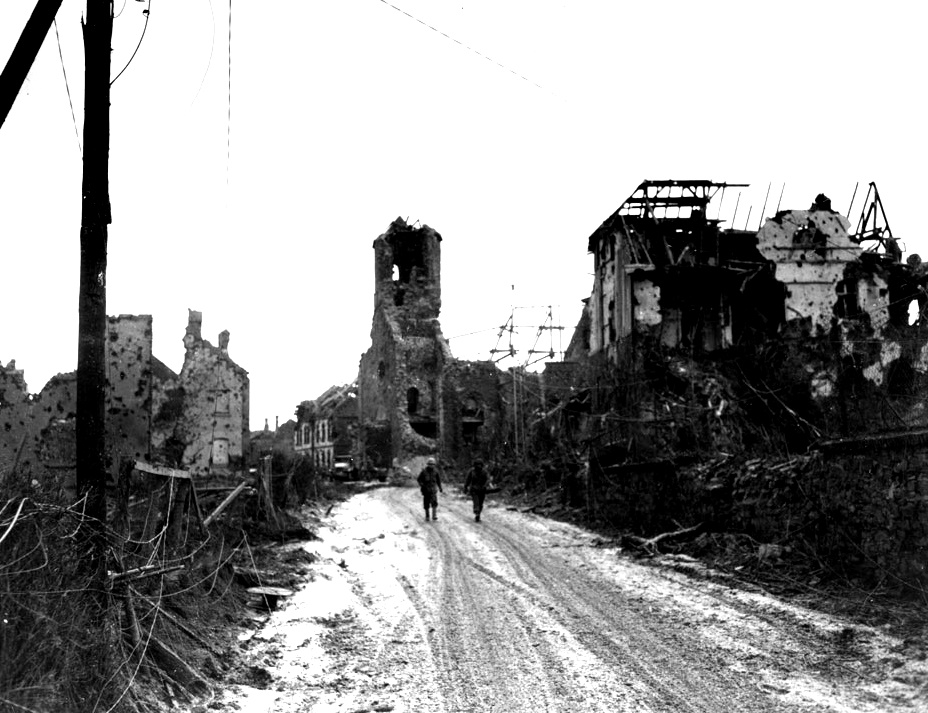
INTRODUCTION
This archive covers the operations of the 26th Infantry Regiment, 1st Infantry Division, in the attack on the Hürtgen Forest, November 16, to December 5, 1944, in the drive to the Roer River. A brief introduction of major events leading up to this action may help acquaint the reader with the situation in this portion of the theater and the general area where the action herein described took place. On June 6, 1944, the British and American armies successfully invaded the continent by simultaneous landings made in the vicinity of the Cherbourg Peninsula. After six weeks of bitter fighting for expansion room and build-up, the US First Army effected a breakthrough. Rapid exploitation by all Allied Forces did not entirely annihilate the German forces in Normandy but broke them to the extent that they were no longer an effective fighting force. The way across France and Belgium was open.

 In a little over three months, the western Allies had reached the borders of the Fatherland (Germany). However, the rapid advance had extended communication lines to the extent that further full-scale operations were impossible. The armies had outrun their supplies and were forced to stop. At this point, the enemy had the first breathing spell afforded him since the invasion. He took advantage of it by reinforcing and stiffening his resistance. Bitter fighting was forecast along the entire front. This was, according to the master Allied plan, the period of build-up for the final battles. Meanwhile, it was necessary to ‘keep up an unrelenting offensive to the extent of our means to wear down the enemy and to gain the footholds necessary for launching the final show. During this period, the US, First (Gen Courtney H. Hodges), and Ninth Armies (Gen William H. Simpson) moved east of Aachen to cut that city off.
In a little over three months, the western Allies had reached the borders of the Fatherland (Germany). However, the rapid advance had extended communication lines to the extent that further full-scale operations were impossible. The armies had outrun their supplies and were forced to stop. At this point, the enemy had the first breathing spell afforded him since the invasion. He took advantage of it by reinforcing and stiffening his resistance. Bitter fighting was forecast along the entire front. This was, according to the master Allied plan, the period of build-up for the final battles. Meanwhile, it was necessary to ‘keep up an unrelenting offensive to the extent of our means to wear down the enemy and to gain the footholds necessary for launching the final show. During this period, the US, First (Gen Courtney H. Hodges), and Ninth Armies (Gen William H. Simpson) moved east of Aachen to cut that city off.

 Simultaneously, the US First Army attacked and captured that first major German city. The offensive drive to the Rhine River was planned with all of the Allied forces taking part, the British 2nd Army (Gen Miles Dempsey) attacking across the Meuse River in Holland on the Allied left and the US Third Army (Gen George S. Patton) on the right. As it is generally known the first attempt to secure a Rhine River bridgehead by an airborne invasion in the north during the month of September 1944 had been unsuccessful. The US Third Army was now butting its head against the strongest sections of the German West Wall (Siegfried Line). These factors no doubt contributed to the decision to launch the main effort with the US First and Ninth Armies, the US Ninth to the left and abreast of the First.
Simultaneously, the US First Army attacked and captured that first major German city. The offensive drive to the Rhine River was planned with all of the Allied forces taking part, the British 2nd Army (Gen Miles Dempsey) attacking across the Meuse River in Holland on the Allied left and the US Third Army (Gen George S. Patton) on the right. As it is generally known the first attempt to secure a Rhine River bridgehead by an airborne invasion in the north during the month of September 1944 had been unsuccessful. The US Third Army was now butting its head against the strongest sections of the German West Wall (Siegfried Line). These factors no doubt contributed to the decision to launch the main effort with the US First and Ninth Armies, the US Ninth to the left and abreast of the First.
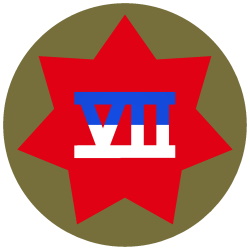
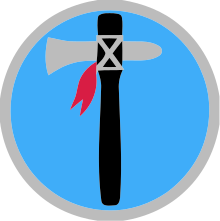 The main effort was to be made by the VII Corps (Gen J. Lawton Collins) attacking east and southeast of Aachen to gain crossings of the Roer River north of Düren, then proceeding to capture Koln on the banks of the Rhine River. On the left, the XIX Corps (Gen Willis D. Crittenberger) was to coordinate its attack with VII Corps, assist VII Corps in its advance, and protect the flank of the Twelfth Army Group (Gen Omar N. Bradley).
The main effort was to be made by the VII Corps (Gen J. Lawton Collins) attacking east and southeast of Aachen to gain crossings of the Roer River north of Düren, then proceeding to capture Koln on the banks of the Rhine River. On the left, the XIX Corps (Gen Willis D. Crittenberger) was to coordinate its attack with VII Corps, assist VII Corps in its advance, and protect the flank of the Twelfth Army Group (Gen Omar N. Bradley).
GENERAL SITUATION

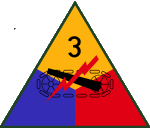 Within its zone of advance, the First Army had formidable obstacles. Due east of Aachen were the main defenses of the Siegfried Line beyond which was flat to rolling terrain dotted with towns, each a fortress. Tied in with these defenses to the south was the Hürtgen Forest area, a rolling to rugged, heavily forested area forming a triangle Aachen-Düren-Monschau efficiently strengthened pillboxes, mines, and wire. During the first days of November, there was evidence of a strong enemy build-up on the front of the US, First and Ninth Armies, because as late as November 25, 1944, the First Army had
Within its zone of advance, the First Army had formidable obstacles. Due east of Aachen were the main defenses of the Siegfried Line beyond which was flat to rolling terrain dotted with towns, each a fortress. Tied in with these defenses to the south was the Hürtgen Forest area, a rolling to rugged, heavily forested area forming a triangle Aachen-Düren-Monschau efficiently strengthened pillboxes, mines, and wire. During the first days of November, there was evidence of a strong enemy build-up on the front of the US, First and Ninth Armies, because as late as November 25, 1944, the First Army had 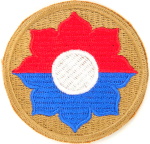
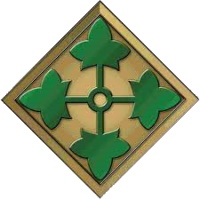 identified twelve German divisions on its front with an estimated strength of 65.000 to 70.000 men. It was apparent that an attack by the First Army, particularly with the VII Corps, could be successful only if our forces were strengthened. The VII Corps (Gen J. Lawton Collins) at this time, was composed of the 1st Infantry Division (Gen Clarence R. Huebner) in the Aachen area, the 3rd Armored Division (Gen Maurice Rose) in the Stolberg area, and the 47th Regiment Combat Team (9th Infantry
identified twelve German divisions on its front with an estimated strength of 65.000 to 70.000 men. It was apparent that an attack by the First Army, particularly with the VII Corps, could be successful only if our forces were strengthened. The VII Corps (Gen J. Lawton Collins) at this time, was composed of the 1st Infantry Division (Gen Clarence R. Huebner) in the Aachen area, the 3rd Armored Division (Gen Maurice Rose) in the Stolberg area, and the 47th Regiment Combat Team (9th Infantry 
 Division – Gen Louis A. Craig) to the south of the Corps zone. Three additional infantry divisions were subsequently assigned to reinforce the First Army, the 4th Infantry Division (Gen Raymond O. Barton), the 99th Infantry Division (Gen Walter E. Lauer), and the 104th Infantry Division. The 99th Infantry Division (Gen Walter E. Lauer) was assigned to the V Corps (Gen Leonard T. Gerow) in the Eifel Forest area while the 4th Infantry Division and 104th Infantry Division plus the 4th Cavalry
Division – Gen Louis A. Craig) to the south of the Corps zone. Three additional infantry divisions were subsequently assigned to reinforce the First Army, the 4th Infantry Division (Gen Raymond O. Barton), the 99th Infantry Division (Gen Walter E. Lauer), and the 104th Infantry Division. The 99th Infantry Division (Gen Walter E. Lauer) was assigned to the V Corps (Gen Leonard T. Gerow) in the Eifel Forest area while the 4th Infantry Division and 104th Infantry Division plus the 4th Cavalry 
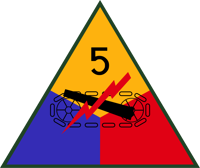 Group and CCR of the 5th Armored Division were assigned to the VII Corps for the drive. Preliminary to the attack by the First and Ninth Armies in the Roer River offensive a gigantic air demonstration was scheduled to soften up the front where the main attack was to take place. As planned and executed ‘Operation Q’ was the largest scale close support effort ever flown by the Allied Air Forces. Approximately 10.000 tons of bombs were dropped on fortified positions in cities and areas in front of the First and Ninth Armies.
Group and CCR of the 5th Armored Division were assigned to the VII Corps for the drive. Preliminary to the attack by the First and Ninth Armies in the Roer River offensive a gigantic air demonstration was scheduled to soften up the front where the main attack was to take place. As planned and executed ‘Operation Q’ was the largest scale close support effort ever flown by the Allied Air Forces. Approximately 10.000 tons of bombs were dropped on fortified positions in cities and areas in front of the First and Ninth Armies.
The VII Corps contemplated the use of the 104th Infantry Division on the left, the 1st Infantry Division in the center, and the 4th Infantry Division on the right attacking generally northeast with the objectives of seizing crossings of the Roer River, prepared to continue the advance to the east on Corps order. The 3rd Armored Division was assigned a limited objective attack ‘echeloned slightly in time’ behind the attack of the 1st Infantry Division to seize the Hastenraht Area. The 1-ID zone would then expand, squeezing out the 3-AD. The 104-ID sector, wide at the outset, narrowed down considerably upon the division’s eastward progress until finally the 104-ID would be squeezed out by the northeasterly movement of the 1-ID. Prior to the 1-ID’s relief by the 104-ID in the Aachen Area the division commander, Gen Huebner, briefed his regimental commanders on the impending operation. Shortly, general areas were assigned to the regiment in wooded areas southwest of Schevenhutte for assembly upon relief by the 104-ID. The schedule of events allowed little
time to be spent in assembly areas and the relief was effected during the nights of November 8 and November 9, while the Roer River drive was scheduled to begin on November 11.
The terrain in the new area differed from that in the Aachen Area immensely. The 1-ID’s right flank was entirely forested, fairly rugged, and practically without trafficable roads. There was only one unimproved road, not much more than a trail, running northeast in the woods. The left portion was rolling to fairly rugged, dotted with small towns and wooded areas with a fair road net. Throughout the area, vehicles were road-bound except where the engineers worked reinforced trails by corduroying. To the front, the major enemy units identified in the zone of the division’s advance were the 12.VGD on the north and the 47.VGD on the south. Neither of these divisions was thought to be the best in the German Army. They had been pummeled, chastised and declared ineffective in the not-too-distant past. Somehow we were to learn that they had been rejuvenated.
Morale in the 1-ID was excellent. From the beaches of Normandy the division rolled along with the First Army through France, Belgium, and the Siegfried Line defenses outside Aachen and had recently effected the surrender of that famous German city. Casualties had been fairly heavy and although some replacements had been received, units were still somewhat short of T/O strength. It was anticipated that close logistical support might be a problem, particularly in the right sector, because of the lack of all-weather roads in the area.
The division plan of attack called for the 16-IR and 26-IR to attack simultaneously at H-Hour. The 18-IR was to be in reserve. The 47-RCT (9-ID) was attached to the 1-ID and was to hold its present position initially. The 16-IR attacking the left was to seize its first objective Hamich, protect the left flank of the division, and maintain contact with the 3-AD on the left and the 26-IR on the right. The 26-IR attacking on the right was to seize and hold its first objective, protect the right flank of the division, and maintain contact with the 4-ID on the right and the 16-IR on the left. Radio silence was in effect until 1030 on D-Day. H-Hour and D-Day were to be announced. Division artillery was to remain silent until 1030 on D-Day and was not to open fire until the scheduled preparation for the attack.
MOVE TO THE ASSEMBLY AREA AND PREPARATION
As soon as the division had notified the regiment of the impending move and assigned the general assembly area the regimental commander sent a staff officer to the Schevenhutte Area to select regimental, battalion, and separate company areas. In addition, the 47-RCT was to be contacted for specific information relative to the enemy, terrain, and present operations in that immediate area. As the battalions were relieved by elements of the 104-ID, they entrucked for their forest bivouacs. So, by November 9, the regiment had closed in the area, and the troops were made as comfortable as possible. All organic and individual tentage was used to advantage because of the excellent cover and concealment afforded by the forest. Kitchens were brought up and released to units for the duration of the bivouac. Everyone enjoyed three hot meals a day. The troops were kept as busy as possible under the circumstances with calisthenics and light exercise in the close areas provided. Daily rains prevented any great amount of athletics.
REGIMENTAL PLAN OP ATTACK

 The 26-RCT had been assigned successive objectives in a northeasterly direction through the forest and beyond toward Düren. The regimental commander decided to attack in a column of battle groups. Each of the battle groups is to be made up of a rifle battalion reinforced by a platoon of tanks from the 745-TB, a platoon of self-propelled tank destroyers (3″ guns) from the 634-TDB, and a platoon from the organic AT company. In order of march was to be 2/26, Battle Regimental Forward Command Group, Cannon Co, 1/26 Battalion Battle Group, 3/26 Battle Group, Regimental Rear Command Group, and Service Company with trains.
The 26-RCT had been assigned successive objectives in a northeasterly direction through the forest and beyond toward Düren. The regimental commander decided to attack in a column of battle groups. Each of the battle groups is to be made up of a rifle battalion reinforced by a platoon of tanks from the 745-TB, a platoon of self-propelled tank destroyers (3″ guns) from the 634-TDB, and a platoon from the organic AT company. In order of march was to be 2/26, Battle Regimental Forward Command Group, Cannon Co, 1/26 Battalion Battle Group, 3/26 Battle Group, Regimental Rear Command Group, and Service Company with trains.
The 2/26 was scheduled to attack at H-Hour on D-Day to clear the road along the axis of advance and to seize the first objective. Thereupon the battalion was to reorganize and be prepared to advance on regimental order. The 1/26 was to remain in its present assembly area prepared to move on 45-minute notice, effective H-Hour, to pass through the 2/26 to seize the next objective, to reorganize, and be prepared to proceed to further objectives. The 3/26 was also to remain in its present assembly area prepared to move on 45-minute notice, effective H-Hour, and to be prepared to assist the 2/26 in the attack on the initial objective or to seize and secure other objectives assigned by the regiment. The line presently held by the 47-RCT was to be the Line of Departure for the 26-IR, D-Day and H-Hour were to be announced.
It was anticipated that resistance would be stiff at first as the 2/26 hit the line of fortifications and emplacements reinforced with mines and wire. The bombing mission had not been called in to break up the close-in enemy defenses because of the proximity of friendly troops. However, it was a fact that once the enemy line was pierced we might be in a position to effect a minor breakthrough. The 1/26 and 3/26 could then be thrown in to exploit the break for what it was worth. As previously stated the drive to the Roer had been planned to start on November 11, weather permitting. In the event that inclement weather prevailed to prevent the preliminary close support bombing, successive postponements of 24 hours would be called until November 16 which was to be the deadline regardless of the weather. If the bombing could not be accomplished by that date the ground forces would jump off without air preparation.
Rain and fog persisted through November 15 and the majority seemed to enjoy the rest and hot food, not many realizing that another 24 hours of dampness might eliminate air support. The early morning of November 16 was cloudy and foggy but as the day progressed the clouds began to break and as planned the air bombardment took place. Artillery opened up with its close-in preparation and troops began the muddy march to the line of departure.
NARRATION
The 2/26 jumped off at H-Hour, precisely 1245 hours, November 16, 1944, on the heels of the air and artillery preparations. Heavy artillery, mortar, and small arms fire opened up on the battalion as though part of our plan. Progress was extremely slow – it always is initially when hitting a prepared defensive position. It seemed as though any movement by our troops was observed by enemy observation posts. Mortar fire was particularly accurate. Trails and fire lanes were particularly dangerous. The enemy had pillboxes and emplacements so arranged that final protective fires covered all approaches. From the start, it became evident that the woods must be cleared. Any by-passed area became a threat to the flanks or rear. By 1700 hours, the 2/26 had broken through the enemy’s prepared defenses after knocking out pillboxes and emplacements and was approximately 500 yards in from the line of departure. The cost had been heavy in casualties, particularly from artillery and mortars, every round was a tree burst.
During the afternoon the regimental commander decided to employ the 1/26 on the left of the 2/26 Battalion to cover the draw running southwest toward Schevenhutte. By 1830 hours, the 1/26 had pulled abreast of and was in contact with the 2/26. Both battalions continued to mop up enemy resistance within their areas and buttoned up for the night. The events of the first day in the forest forecast a long rough battle for three or so miles before hitting the open again. The mass of enemy artillery and mortar fire received on a narrow front was indicative that the major part of enemy gun emplacements had not been destroyed by the air bombardment. The defender had every advantage in calling for supporting fires. He was waiting hidden in a camouflaged hole or bunker while the attacker walked into his prepared defensive fires. He knew every tree, bush, and trail. Our observers were able to pick no targets, there seemed to be none and they fired by guess and by God, by the map and by sound.
From the outset, everyone learned to stay out of fire lanes, particularly the junctions, front line troops avoided them as they had the streets in Aachen. Besides the small arms fire, mortars had them zeroed in and continually covered them by fire. To the rear, roads, road junctions, and fire lanes were interdicted. It was found necessary to set up mortars in small clearings in the woods where available. To the rear, any lengthy use of fire lanes was avoided except that of necessity certain lanes had to be used to supply units since the only road in the area ran northeast generally, somewhat in the center of the regimental zone. That one road was little more than a trail which, during this rainy season, could not take any heavy traffic. Consequently, the battalions were experiencing extreme difficulty in keeping their tanks, TDs, and other vehicles up within reach when required even at this slow rate of movement. The platoon of engineers worked around the clock to get the road in shape by morning so that the tanks and TDs could move up to their respective battalions.













